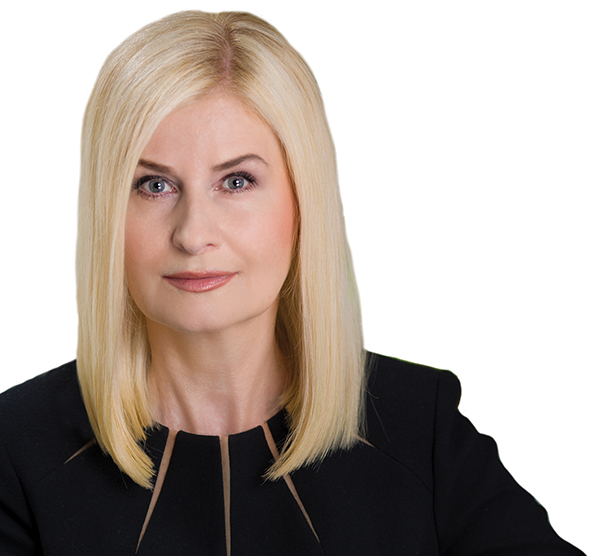Sberbank Europe CEO outlines its digital transformation
Sonja Sarközi, CEO of Sberbank Europe, which operates in eight markets across central and eastern Europe, explains how it is well on its way to transforming into a modern bank with automated and digitalised processes, as well as a unified customer approach.
This article is part of The Banker’s Special Report, Digital transformation across European banking groups, in association with Backbase.
Q: What is Sberbank’s digital transformation strategy?
A: People today expect to be able to do their banking from anywhere, quickly and digitally. We want to enable our customers to do just that by offering them transparent, easy-to-understand products at attractive terms, as well as exceptional service and a digital user experience.
Further reading
This is why we put a tight focus on our IT strategy. We have defined six priorities for the 2019-2021 period: cost efficiency, digitalisation, effective risk management, effective finance management, supply chain business development and efficient group IT governance.
In 2019, we started to roll out our strategy by enhancing cost efficiency through process automation, with a focus on sales and service digitalisation through a new omni-channel platform (OCP) for online and mobile banking. Moreover, we are implementing our group-wide finance and risk management platform (FRMP), a project that will increase the effectiveness and efficiency of information systems and data flows.
Q: How is it being rolled out across your regional footprint?
A: Our OCP team is about to deploy a new mobile banking application for customers. We will start in Croatia and the other countries will follow step by step.
We started our FRMP project with the most crucial aspects: budgeting and planning. Ultimately, FRMP will improve our information management capabilities, enable group-wide centralised data governance and data warehousing based on single-source-of-truth data.
We are driving digitalisation in all our subsidiaries. For example, in 2020 several subsidiaries launched instant payments enabling money transfers within seconds; Sberbank CZ has put into operation a new software robot that helps to process thousands of client transactions monthly; and we are upgrading and improving the functionality of our mobile banking solutions for corporate and retail customers across the region, to name a few initiatives.
Our German branch, which offers end-to-end online deposits, savings accounts and consumer loans, has achieved one of the best customer journey and time-to-yes indicators in the market. On average, customers spend around 13 minutes submitting an application with all the required documents. The loan decision is made within seconds, and the money is available quickly and easily within 24 hours after checking the necessary documents. We have achieved a total loan volume of more than €400m since instant loans launched in Germany in 2018.
Q: Are you trying to create a seamless and uniform digital experience across multiple countries?
A: With our OCP project we are building a single platform to support our customers’ digital banking experience across all channels and all countries. By doing so we expect to increase our customers’ engagement with Sberbank Europe, while boosting our market share. We also expect this approach to be more cost-efficient, as the solution can be used by all our subsidiaries. The OCP will give us the opportunity to serve our clients in a variety of ways that are not only convenient and effective, but will also boost our brand’s image and credibility.
Q: Are there country-specific challenges?
A: All countries in our region differ in terms of digitalisation, number of internet users, regulatory specifics, and so on. These differences have become even clearer recently, when regional regulators have reacted to the economic threats of the Covid-19 pandemic, all in their own unique way.
Sberbank Europe has different starting points in every country when it comes to the implementation of our digital strategy. You cannot take a product as it is offered in Croatia and bring it unchanged to the Czech Republic; it has to be tailored and adjusted to local specifics.
Q: How are you addressing these challenges and do they influence your digital strategy?
A: Our strategy is based on those local specifics and assessment of the strong features of the markets where we are present. We have a high level of local teams’ involvement in the strategy implementation, which helps us to adjust it to local realities. Whether in Serbia or in Germany, our priority is to make banking as easy as possible by offering our clients transparent, easy-to-understand products with attractive offers and extraordinary service, as well as digital end-to-end processes.
We are aiming to improve our internal processes, increase our efficiency by making better use of our synergies and create a unified approach towards our customers. The keywords are ‘customer experience’: our clients should be able to expect the same level of quality, innovation, transparency and competence wherever they approach us. The language of good service is universal.
Q: What would be the ideal solution?
A: We are well on the way to turning ourselves into a modern and light bank with automated and digitalised processes, improved information management capabilities, strong online banking and flawless customer service. A bank that wins customers for life.



